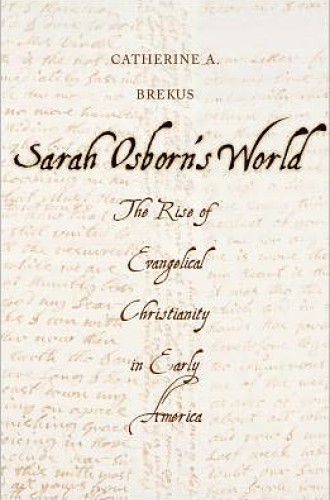Sarah Osborn’s World, by Catherine A. Brekus
Catherine Brekus introduces us to a disturbing, heartbreaking and improbably inspiring life. Sarah Osborn’s early years were an unending series of afflictions made worse by the austere Calvinism of her family and church. Born in England in 1714, Sarah emigrated to America with her parents, who settled in Rhode Island. Her parents emphasized her sinfulness to such an extent that she interpreted any misfortune as God’s just punishment. When, at the age of eight, she stumbled into the fire and burned her right hand, she believed that God had chastised her for playing on the Sabbath.
Her parents did not spare the rod, and Sarah’s extreme self-loathing and repressed anger at her parents nearly led her to take her own life. She then married a sailor against her parents’ will and stole a considerable sum of money when they refused to give her a “marriage portion.” Shortly after the birth of their first child, Sarah’s husband died. Another marriage brought her some renewed stability, but her second husband promptly went bankrupt, and only Sarah’s unstinting work ethic kept them from starvation. All her previous struggles seemed trivial, however, compared to the death of her only child, Samuel, at age 11.
Sarah lived through the decades in which New England Puritanism evolved into early evangelicalism, which was distinguished by an intense focus on individual conversion, a willingness to trust experiences of the heart as clear evidence of salvation, and a weakening of established religious authority. While reading the early chapters of Sarah Osborn’s World, many readers will find themselves repulsed by certain aspects of late-Puritan Calvinism. As the values associated with the Enlightenment began circulating in New England, Calvinists redoubled their insistence that all events reflected God’s will and that God had predestined individuals—including those who died in the womb or as infants—to either hell or heaven.





